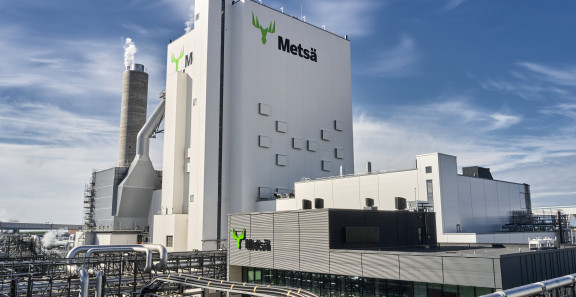Sitowise started simulating traffic at Metsä Fiber's bioproduct mill around 2020. Hundreds of vehicles move around the largest wood processing plant in the Northern Hemisphere, and traffic must work so that the wood travels smoothly and no sumps are created.
- In the first phase, Sitowise's tasks included modelling rubber-wheel and train traffic as well as simulating an autonomous crane field, says Sami Pailamo, leading consultant at Sitowise.
Cooperation with Sitowise was easy and productive. I especially liked that the results were well documented and the conclusions were clearly thought out in advance.
Pasi Pulkkinen, Metsä Group
- Traffic simulation provides a basis for the implementation and control of traffic at the factory. Efficient control, in turn, enables a steady and uninterrupted flow of material to and from the mill, which is a basic requirement for the production of the new mill, says Pasi Pulkkinen, Senior Vice President, Logistics at Metsä Group.
The design of the mill itself began later. Under Fimpec's guidance, Afry was responsible for the overall design and Sitowise, in turn, for physical traffic planning and signage design for the entire mill area.
- In traffic planning, we were also able to influence the layout design of the factory in order to make operations as efficient and safe as possible. In addition to heavy traffic, traffic planning also took into account external and internal pedestrian traffic, which is very important for general occupational safety and Metsä Group's values, Pailamo says.
- Cooperation with Sitowise was easy and fruitful. I especially liked that the results were well documented and the conclusions were clearly thought out in advance. The experts knew their stuff and gave recommendations for implementation. Just what the client needed, Pulkkinen rejoices.
- Sitowise has versatile traffic and logistics simulation tools at its disposal. Simulation modelling is a risk-free testing platform that can be used to test the effectiveness of alternative solutions before making expensive investments, says Iida-Maria Seppä, Senior Specialist at Sitowise and head of the logistics team.
From the designer's point of view, the simulations and traffic planning task were very interesting and partly demanding due to the large scale and uniqueness of the task.
Sami Pailamo, Sitowise
Wood unloading is carried out using autonomously operating cranes
The Kemi bioproduct mill is the largest investment in the history of the Finnish forest industry, valued at EUR 2 billion. After the initial challenges, the ramp-up of normal production at the plant is currently underway. The uniqueness of the plant harnesses its efficient operation.
- Wood is mainly sourced from Northern Finland, Kainuu and Northern Ostrobothnia. About 1/3 part of the trees are delivered from the nearby area by trucks and about 2/3 part by rail. Wood unloading is carried out using autonomously operating cranes. This is unique. In addition, the mill does not use any fossil fuels in production, Pulkkinen says.
- The simulations and traffic planning task were very interesting from the designer's point of view and partly demanding due to the large scale and uniqueness of the task. The task required an understanding of extensive issues, in which knowledge of factory operations and processes was very useful, Pailamo says.
Photo: Metsä Group

